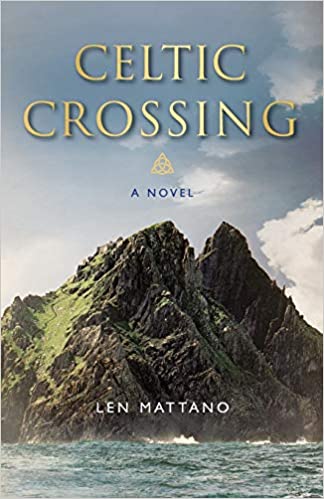“We all die.”
This simple, unavoidable reality anchors the action of Celtic Crossing. How do we react in the face of grief? Do we turn to God or away from God? How do our actions—seemingly so personal—affect those around us?
When Fr. Kevin Schaeffer receives a plea for help from Aideen Callaghan in finding a miraculous healing cross for her dying grandson, he confronts generations of family illness, grief for his own mother, and the intrigue of a missing relic. He is joined by a friend at the Vatican, an Irish ex-seminarian discerning his vocation, a vivacious Italian researcher, and a host of family and friends. They share personal histories and scholarly research to try to find the relic before it’s too late. Alongside the present day action are scenes from the past that show the relic’s path to the reader. Will the paths of the relic and the researchers cross in time?
On this literary pilgrimage, the reader reflects on the human struggle with pain. Using his personal knowledge of oncology, author Len Mattano takes his readers not through a soap opera or an unbelievable historical mystery full of conspiracies and espionage, but through a reflection of human drama brought to life by meticulous research of the past both in the novel and by the author himself. How did the apostles react to Jesus’ death and resurrection? How do disciples live out the faith when facing the challenges of the world? Some people make choices that lead them further from God, others lean more into their faith. As the characters make good or bad choices, God remains present and unchanged. The relic of the true cross is a tangible sign of salvation in the novel, but faith in the mystery of Christ’s death and resurrection is shown to surpass the need for tangible items: “Christ is not confined to the wood of the cross.” I found this novel truly inspirational, and it’s one of the rare books I look forward to talking about with others.
There are some readers who won’t find Celtic Crossing appealing. First of all, the prose is dense, and the dialogue can feel too formal. Particularly in the first third of the novel, I found myself distracted by an overemphasis on details and research: for example, Fr. Kevin’s iPhone and his beverage preferences. Thankfully, once the novel finds its stride, the full cast of characters comes to life. But this is not a high-octave Hollywood page-turner thriller; the reader is meant to proceed slowly with the emphasis on inspiration rather than suspense, although the reader will become invested in uncovering the secrets of the relic’s journey and seeing how the scenes fit together. Plan to reread it!
Catholics who are scrupulous may also have difficulty with some situations in the book. Early on, we learn of a fallen-away Catholic who had her ashes scattered. Although there is no clerical approval of this action, the lack of corrective or comment may trouble readers. At another point, someone guilty of a grave sin makes amends with his family, but it is unclear if he also makes amends with God. Even the family reconciliation feels too easy because the most difficult conversations happen between scenes. For some readers, there is sufficient narrative for a fruitful discussion, but other readers may be uncomfortable with the presentation. This is a book best for meditation, not a catechism on details of the faith.
Because specifically Catholic doctrine does not overshadow the novel’s message, it may appeal to non-Catholic Christians who are able to appreciate the idea of relics and priests. The simple truth of the faith as presented seems acceptable to most Christians, but non-believers are likely to be dismissive. Thanks to discussion questions in the book and an image gallery online, Celtic Crossing would serve as a good book for discussion groups. Celtic Crossing appeals most, however, to well-catechized Catholics who want to experience a book and use it as a starting point to consider issues of grief, death, family, interconnectedness, and faith.



